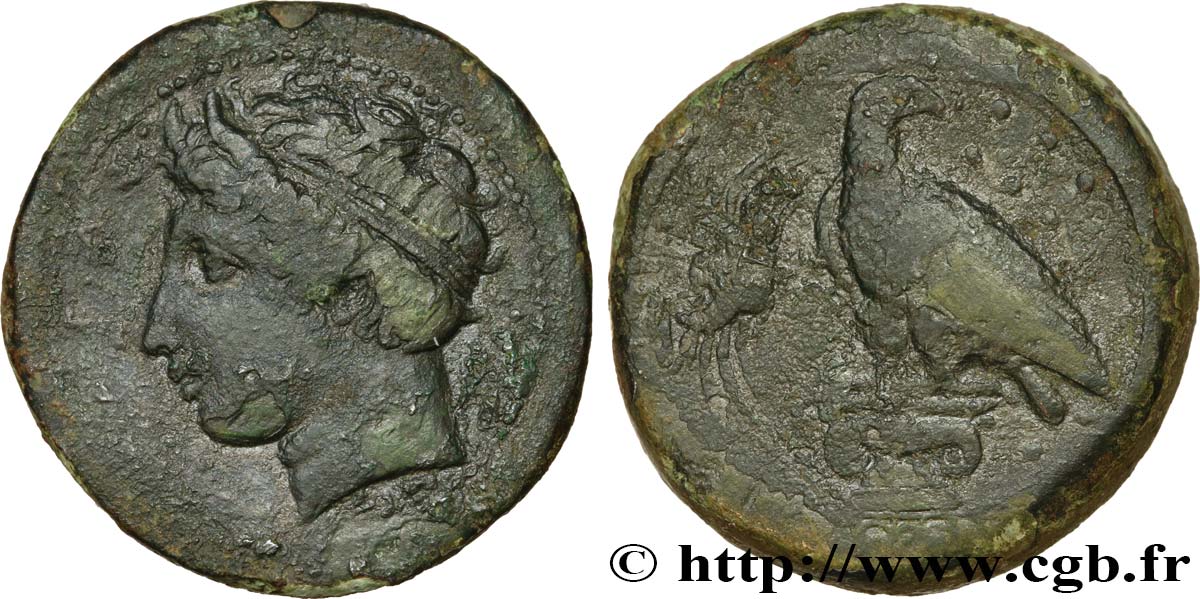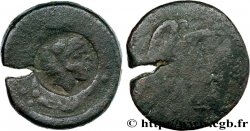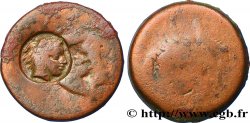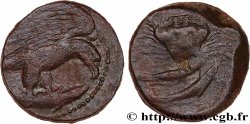Live auction - bgr_467478 - SICILY - AKRAGAS Hemilitron
You must signin and be an approved bidder to bid, LOGIN TO BID. Accounts are subject to approval and the approval process takes place within 48 hours. Do not wait until the day a sale closes to register. Clicking on "BID" constitutes acceptance of the terms of use of cgb.fr private live auctions.
Bids must be placed in whole Euro amounts only. The sale will start closing at the time stated on the item description; any bids received at the site after the closing time will not be executed. Transmission times may vary and bids could be rejected if you wait until the last second. For further information check the Live auction FAQ
All winning bids are subject to a 18% buyer’s fee.
All winning bids are subject to a 18% buyer’s fee.
| Estimate : | 720 € |
| Price : | no bid |
| Maximum bid : | no bid |
| End of the sale : | 06 March 2018 14:05:13 |
Type : Hemilitron
Date: c. 400-380 AC.
Mint name / Town : Agrigente, Sicile
Metal : copper
Diameter : 25 mm
Orientation dies : 5 h.
Weight : 15,24 g.
Rarity : R1
Coments on the condition:
Exemplaire sur un flan épais bien centré avec les grènetis visibles. Belle tête d’Akragas. Faiblesse de frappe au revers. Jolie patine vert foncé, légèrement granuleuse
Catalogue references :
Predigree :
Cet exemplaire provient du stock de London Ancient Coin et de la collection M. P
Obverse
Obverse description : Tête du dieu fluvial Akragas diadémé à gauche, coiffé de la tainia et cornu ; grènetis circulaire perlé.
Obverse legend : [AKRAGAS]
Obverse translation : (Agrigente).
Reverse
Reverse legend : ANÉPIGRAPHE.
Reverse description : Aigle debout à gauche sur une colonne ionique, les ailes repliées, la tête à droite ; dans le champ à gauche, un crabe tourné à gauche ; derrière six globules posés en rectangle en deux rangées.
Commentary
Au droit le coin commence à se boucher sur la tempe du dieu fluvial. Nous sommes bien en présence de l’épithète du dieu au droit. Au revers, nous retrouvons les principaux symboles du monnayage acragantin avant la prise de la cité par les Carthaginois en 406 avant J.-C. C’est certainement un très grand graveur qui a réalisé ce travail élégant et raffiné.








 Report a mistake
Report a mistake Print the page
Print the page Share my selection
Share my selection Ask a question
Ask a question Consign / sell
Consign / sell
 Full data
Full data









